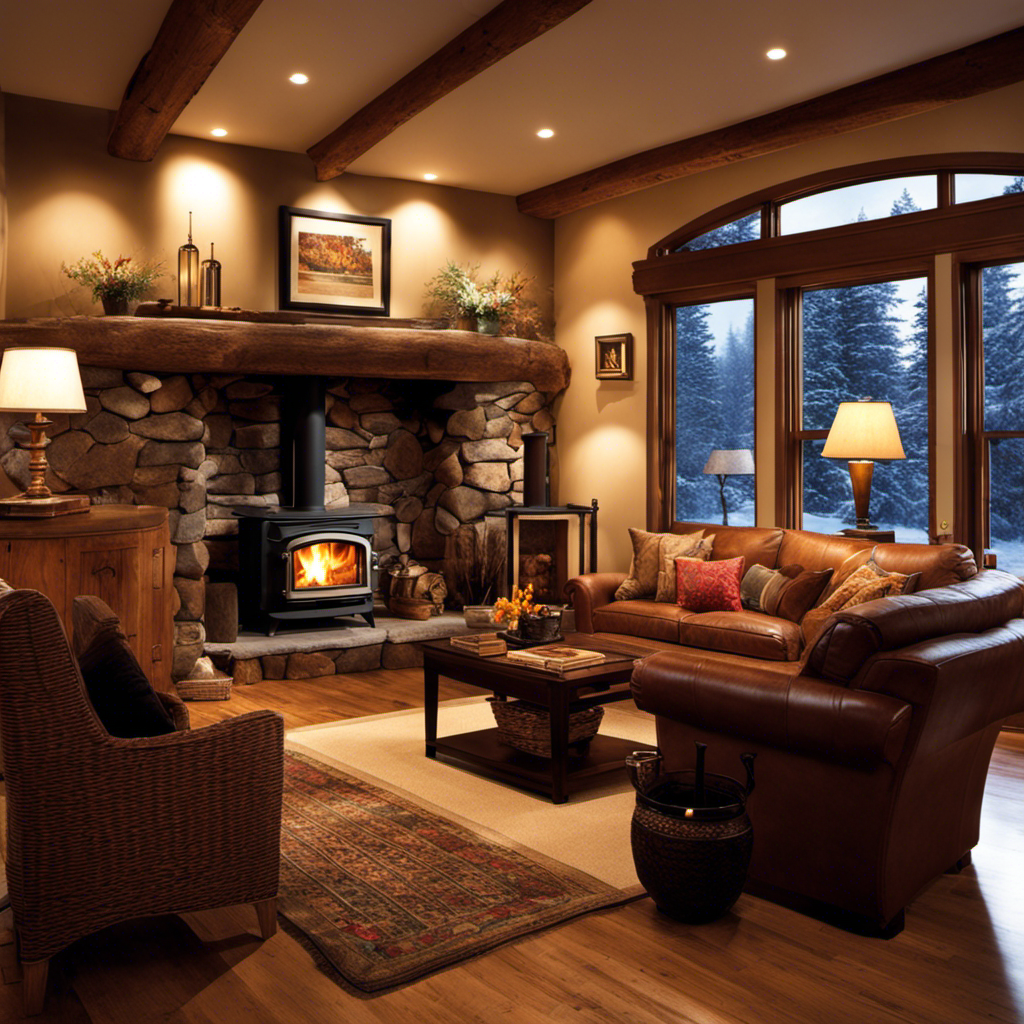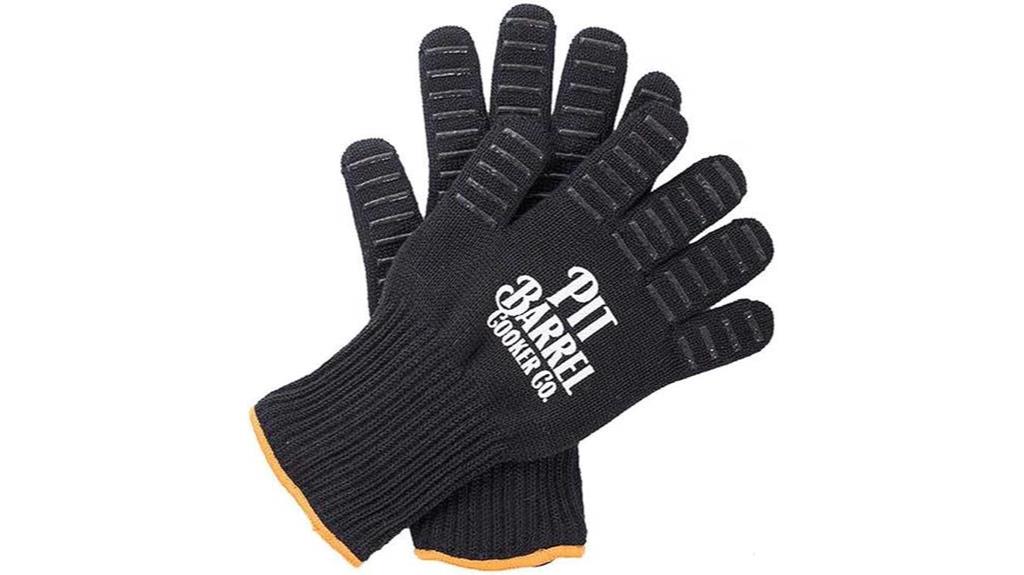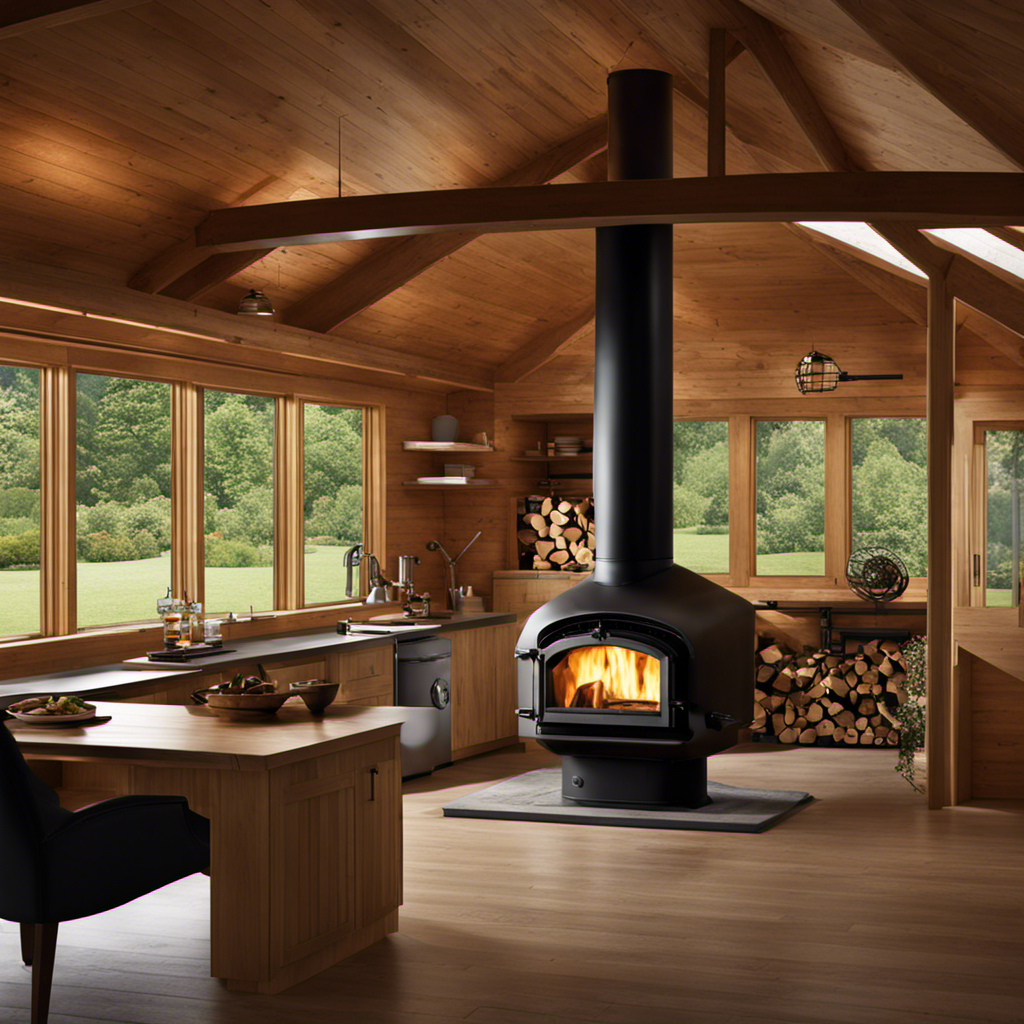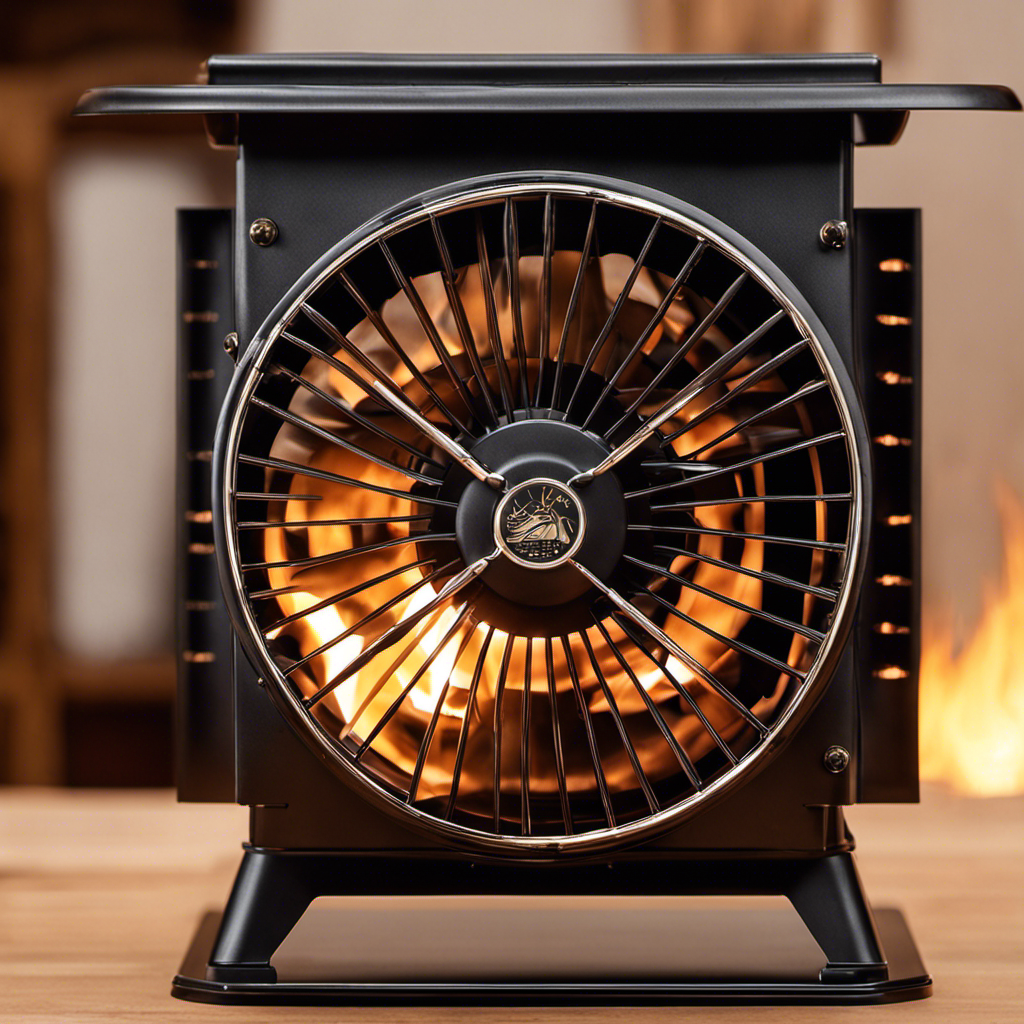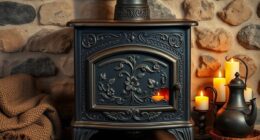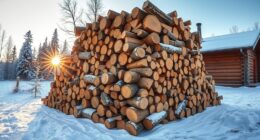Did you realize that wood stoves are capable of producing different kinds of heat? They can give off radiant, convective, conductive, direct, and indirect heat. Each of these types of heat offers distinct advantages and can significantly impact the coziness and warmth of your living space.
In this article, I will delve into the fascinating world of wood stove heat and explain how each type works. So, if you’re curious about the science behind wood stove heat, keep reading!
Key Takeaways
- Wood stoves produce radiant heat, which warms objects and people directly and quickly warms up a room.
- Wood stoves also generate convective heat, which can occur through forced convection (movement of air caused by a fan or blower) and natural convection (movement of warm air rising and cooler air replacing it), helping distribute heat evenly throughout the room.
- Wood stoves generate conductive heat, which is transferred through direct contact between objects, making it efficient for heating objects in close proximity.
- Wood stoves provide direct heat, concentrating warmth in the immediate vicinity, allowing for targeted heating, and minimizing heat loss and potential energy wastage.
Radiant Heat
I can feel the warmth from the radiant heat of the wood stove. Radiant heat is a type of heat transfer that occurs when heat is emitted from a hot surface and then travels through the air to warm objects and people in its path.
One advantage of radiant heat in wood stoves is that it provides direct heat, which can quickly warm up a room. Additionally, radiant heat isn’t affected by air movements, so it can be more efficient in heating a space compared to other forms of heat transfer.
However, there are also some disadvantages to consider. Radiant heat can be unevenly distributed, resulting in hotspots and cold spots in a room. To maximize the efficiency of radiant heat from a wood stove, it’s important to ensure proper placement of the stove, use a heat reflector behind the stove to direct the heat towards the room, and regularly clean and maintain the stove to ensure optimal performance.
Convective Heat
While radiant heat warms objects and people directly, convective heat in a wood stove is the transfer of heat through the circulation of air. In a wood stove, convective heat can occur through both forced convection and natural convection. Forced convection is when the heat is transferred through the movement of air caused by a fan or blower in the stove. This helps to distribute the heat more evenly throughout the room. On the other hand, natural convection occurs when the warm air rises and is replaced by cooler air, creating a natural flow of heat. To better understand the differences between forced and natural convection in a wood stove, refer to the table below:
| Convection Type | Description |
|---|---|
| Forced Convection | Heat transfer through the movement of air caused by a fan or blower |
| Natural Convection | Heat transfer through the natural movement of warm air rising and cooler air replacing it |
Both forced and natural convection play a significant role in how a wood stove produces heat, ensuring that the warmth is efficiently distributed throughout the room.
Conductive Heat
The wood stove produces conductive heat, which is transferred through direct contact between objects. Conductive heat conduction occurs when heat energy is transferred from one object to another through physical contact. In the case of a wood stove, the hot metal surface of the stove comes into direct contact with objects such as pots, pans, or even the floor. This direct contact allows the heat to transfer from the stove to the objects, warming them up.
Conductive heat transfer is an efficient way to heat objects in close proximity to the heat source. It’s important to note that conductive heat is different from convective heat, which involves the transfer of heat through the movement of air or fluids.
Direct Heat
My wood stove’s direct heat warms up the objects in close proximity to it. Here are four key benefits of direct heat:
-
Efficient heating: Direct heat from a wood stove ensures that the warmth is concentrated in the immediate vicinity, making it an efficient way to heat up a small area or a specific zone in a larger space.
-
Quick warmth: Unlike radiant heat, which can take some time to heat up a room, direct heat provides instant warmth as soon as the stove is ignited. This is particularly beneficial on colder days or when you need immediate heat.
-
Targeted heating: Direct heat allows you to direct the warmth exactly where you need it. Whether you want to warm up your hands, dry wet clothes, or simply cozy up near the stove, direct heat provides a focused and comforting warmth.
-
Energy savings: By heating up only the objects and people in close proximity, direct heat helps to minimize heat loss and energy wastage, resulting in potential energy savings.
With all these benefits in mind, let’s now explore the concept of indirect heat and its advantages.
Is a Wood Stove an Efficient Way to Heat a Space?
Yes, a wood stove heat generation is an efficient way to heat a space. These stoves can produce a substantial amount of heat with minimal fuel, making them a cost-effective and environmentally friendly option. Plus, they add a cozy ambiance to any room.
Can the Heat from a Wood Stove Affect the Taste of Food?
Yes, the heat from a wood stove can indeed affect the taste of food. Different types of wood impact taste differently, such as hickory giving off a strong, smoky flavor while fruit woods like apple and cherry provide a lighter, sweeter taste to the dishes cooked using them.
Indirect Heat
Using indirect heat allows me to safely cook food without exposing it directly to the flames. When it comes to secondary heat sources, indirect heat is a popular choice due to its numerous advantages.
One significant advantage is that it provides a more even and gentle heat distribution, preventing food from burning or overcooking. Indirect heat is particularly useful for large cuts of meat, such as roasts or whole chickens, as it allows for slow and steady cooking, resulting in tender and juicy results.
Another advantage of indirect heat is that it reduces the risk of flare-ups and charring, making it a safer option for grilling. Additionally, indirect heat can be achieved by using methods like using a water bath or utilizing a two-zone fire on a grill.
Overall, indirect heat is a versatile and effective way to cook food, ensuring consistent and delicious results.
Frequently Asked Questions
How Does the Type of Heat Produced by a Wood Stove Affect the Efficiency of Heating a Room?
The type of heat produced by a wood stove affects the efficiency of heating a room. Efficiency factors and heating effectiveness depend on the wood stove’s ability to generate and distribute heat evenly.
Can the Type of Heat Produced by a Wood Stove Be Controlled or Adjusted?
Controlling and adjusting the heat produced by a wood stove is crucial for optimizing comfort. By regulating the airflow and fuel, I can easily manipulate the warmth in the room, like a conductor guiding the temperature symphony.
Are There Any Safety Considerations or Precautions Specific to the Type of Heat Produced by a Wood Stove?
When using a wood stove, it’s important to consider safety precautions and take necessary measures to prevent accidents. This includes keeping flammable items away, using a fire-resistant hearth, and ensuring proper ventilation for the type of heat produced.
Does the Type of Heat Produced by a Wood Stove Have Any Impact on Indoor Air Quality?
The type of heat produced by a wood stove can have a significant impact on indoor air quality. It’s important to note that wood stoves can release harmful pollutants, such as carbon monoxide, into the air if not properly maintained.
Are There Any Specific Maintenance or Cleaning Requirements Related to the Type of Heat Produced by a Wood Stove?
There are specific maintenance and cleaning requirements for a wood stove. Regular cleaning of the chimney and stovepipe is necessary to prevent creosote buildup. Additionally, the stove should be inspected and serviced annually to ensure safe and efficient operation.
Conclusion
In conclusion, a wood stove produces a mind-blowing heat that will make you feel like you’re basking in the fiery embrace of a thousand suns. Its radiant heat will warm your bones, while the convective heat will envelop the room like a cozy blanket.
The conductive heat will seep into every nook and cranny, ensuring no corner is left untouched. With its combination of direct and indirect heat, a wood stove is the ultimate heat-producing powerhouse. Get ready to be amazed by its unparalleled warmth!
Growing up surrounded by the vast beauty of nature, Sierra was always drawn to the call of the wild. While others sought the comfort of the familiar, she ventured out, embracing the unpredictable and finding stories in the heartbeat of nature.
At the epicenter of every remarkable venture lies a dynamic team—a fusion of diverse talents, visions, and passions. The essence of Best Small Wood Stoves is crafted and refined by such a trio: Sierra, Logan, and Terra. Their collective expertise has transformed the platform into a leading authority on small wood stoves, radiating warmth and knowledge in equal measure.

